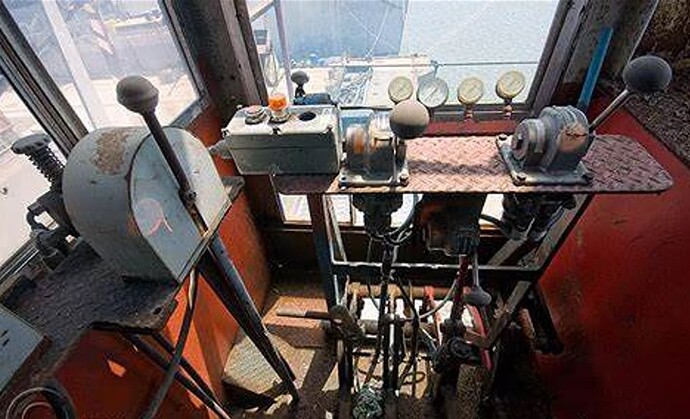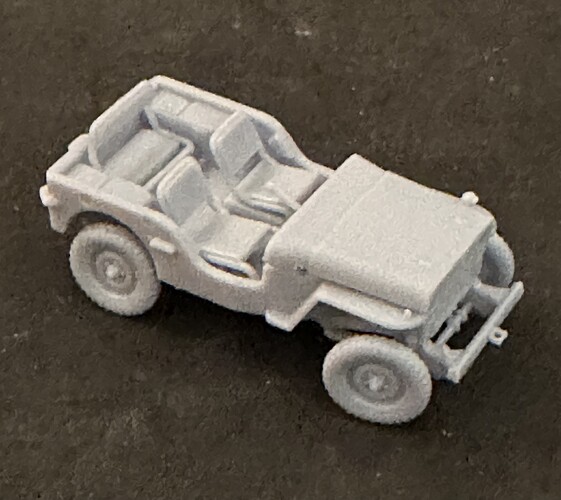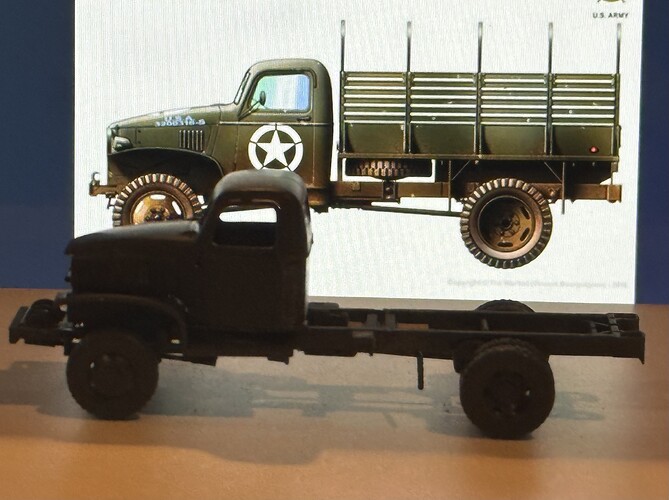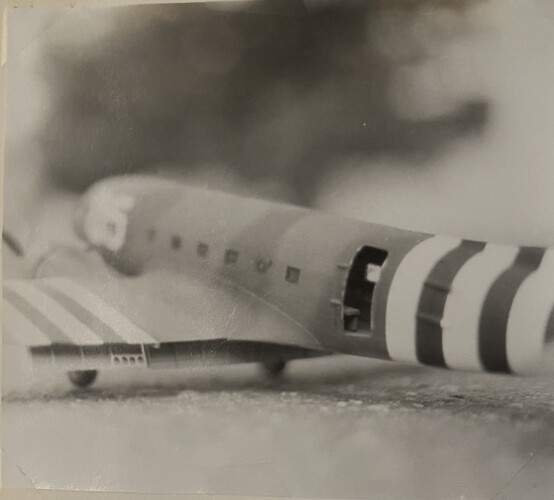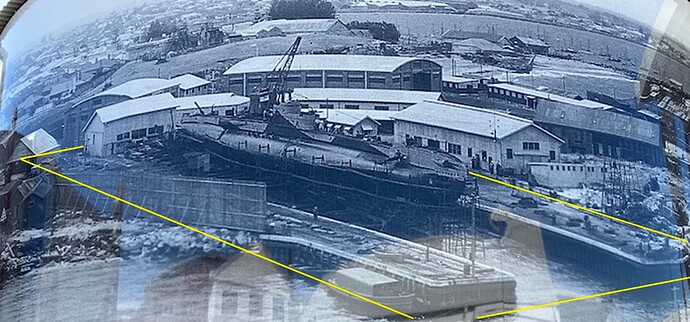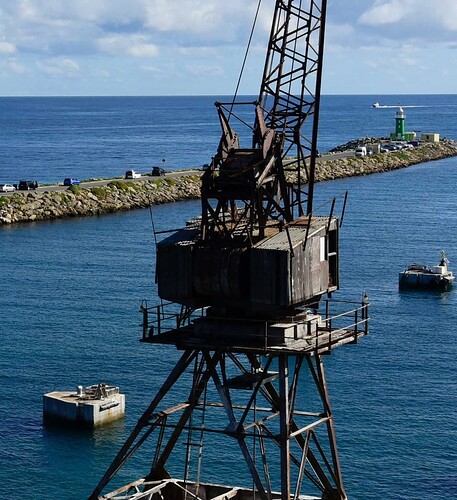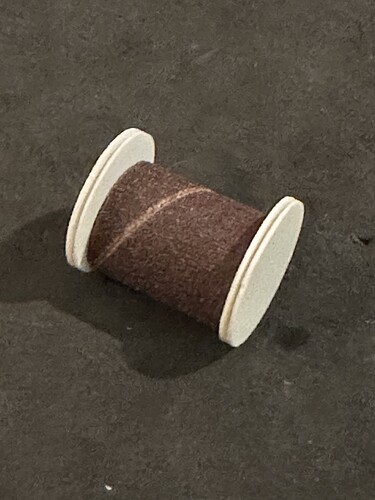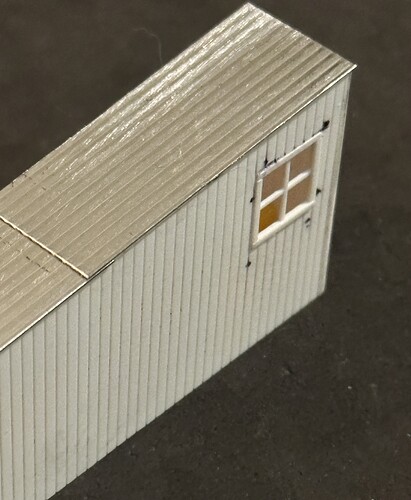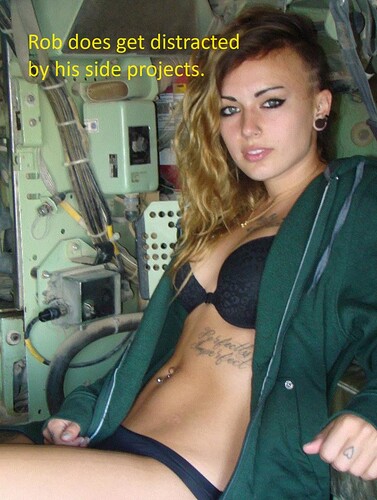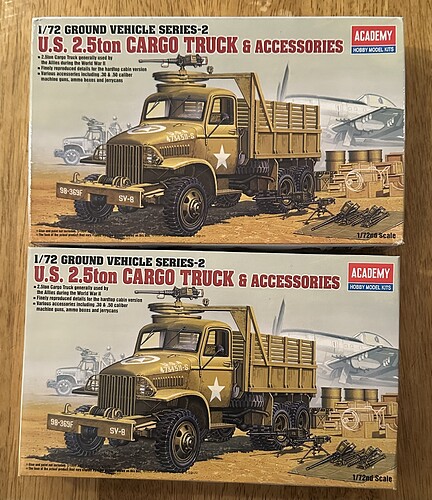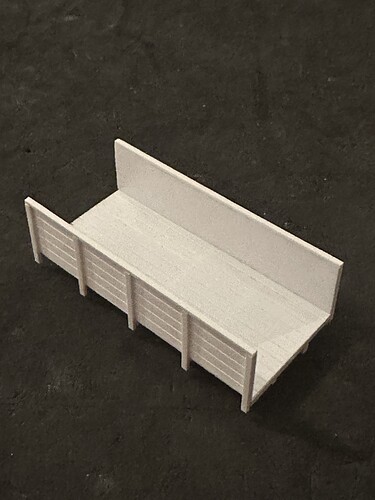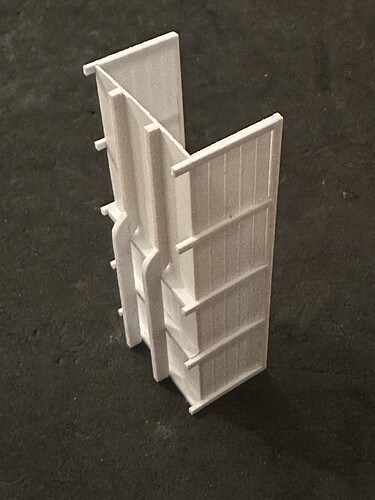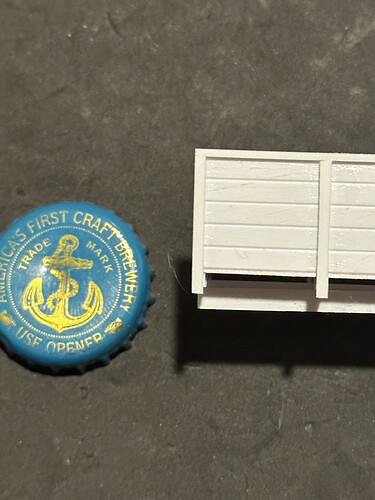Time to start thinking about the cab interior. This looks about right. I have 1/72 treadplate, so it’ll look the part.
My side projects were supposed to help me keep my sanity while trying to sort out the crane design.
The Airfix Jeep was a little gem of a kit.
The Academy CCKW on the other hand… There are several 1/72 kits out there, but I believe this is the best of the bunch. However, I found it nearly impossible to build the cab as per instructions. If you cement the cab’s sides to the tub it’s nearly impossible to get everything else lined up I finally ditched the instructions and built the cab off of the tub. Went together without a hitch. The cab just sits on the tub for now to facilitate painting and adding windows afterward.
Of course I could have built the whole thing in less than two hours, but I did indeed make a Chevy G 7107 out of it. That involved shaving louvers off of the side hood pieces, shortening the wheel base, modifying the drive train and position of the rear wheels. Granted, the rear differential is not correct, still being of the banjo type, but if anyone manages to notice that they are welcome to point out how wrong it is. I was halfway through with the shorter bed, when I thought it might be cool to throw a fifth wheel on this and scratch build a trailer with the unused wheels. I couldn’t decide, so I settled on the AR15.com solution - build both. I guess I’ll be ordering another
At least I’m happy with how it’s turning out. It’s obviously way more tedious than working in 1/48 or 1/35. I’ve done the same conversion in those scales and it was far easier just because the parts are larger.
I think I want to build the next CCKW as a Studebaker. I need to remove the lip around the cab, give it squared off fenders, remove all of the louvers and change the angle of the hood’s lower edge. The angle of the “A” pillar is a bit steeper but I can live with that. Research shows it could have been used there.
It will be awaiting the load transferred from the Flasher by my as yet unfinished crane.
Rob, do you ever build anything OOB, or is that below your pay grade?
I rarely build OOB. Usually it’s because I see something I like and there’s no kit of it. Way back in the day it was the Sho’t and Sho’t Kal. Sometimes it’s because a kit is so lacking in detail and accuracy it needs to be redone, i.e. Panda M109A7.
In the case of this crane I just want to challenge myself.
I blame Shep Paine once again. When I was about 12 I bought some Bondo and converted a Monogram 1/32 Sherman from a three piece transmission housing to a cast one. All because of one of those Monogram inserts he did.
Later, at 20 when I was in 10th SFG(A) I lowered the scratch built flaps on this one as sort of a tribute to Airborne troops Again, due to an insert Paine did in the Monogram C-47 kit.
I can still blame him for a lot of projects that snowball far past their original intent. My idea to do a Shep Paine Tribute campaign is the genesis for the Great Ones thread. I’m sure he inspired a lot of kids back in the day to challenge themselves.
I have been extremely fortunate to be in contact with Jim Stedman, the curator of the Maritime Heritage Museum in Fremantle, WA.
So far he has sent me the records for the Flasher’s usage of the south slipway at Fremantle. They include exact dates and what work was done on the Flasher during each dry dock. From my research I’ve been able to learn that ships and subs are pulled up onto the slipway in the morning, due to the weather. They were released in the afternoon, so by my estimates each two day stint that the Flasher spent up on the slipway afforded about 36 hours worth of work time.
One of the refits in late 1944 included a propeller replacement. That could be interesting. The sub was painted every time it was in dry dock, which works well with my plan. I hope to show repairs to the hull, cleaning and repainting, and swapping of components with the crane. I may also use a smaller crane to portray one of the three torpedoes being loaded. It may not be likely to have been done in dry dock then, but I’ve read that’s it’s easier to load them in dry dock than when the boat is in the water, because it’s not moving. Either way, it’ll be a beehive of a activity given the short time they had.
The other thing I’ve learned is that the slipway (in spite of the Navy’s request to extend its length) was not long enough to accommodate US Navy fleet submarines. Part of the Flasher will have to be shown in the water. The Flasher would have been where the current submarine HMAS Ovens rests outside of the museum. Current photos that I’ve collected so far are all but useless as they show two later slipways that were constructed after the war.
At least now I don’t have to scratch build a gi-normous dry dock like the one I posted earlier in the thread. This photo shows a British submarine on the slipway during the war. It’s much shorter than a Gato class boat. I’ve outlined what I hope to show in the diorama. Note the crane is not the crane. Even though it was built in 1925 the B&W crane may not have been transferred to that slipway until the 50’s. I say may because I’m not sure. I’m using it anyway
It’s going to be big …
That’s what SHE said…
I discovered this photo last week:
Turns out those disks on top are sheaves of some sort. I wonder if cables don’t go around them to elevate and lower the jib.
Easy to change:
I also started on the corrugated roof. I even made the riffles match so the two pieces would mate together nicely, just like the real thing.
The above photo confirms what I had hoped - the internal mechanisms are largely hidden by a center roof piece. That’ll save some guesswork.
So many side projects. I need to do some work on the Flasher today.
You surprised me Bradley. I thought surely you’d say something about mating together nicely.
How lewd!! ![]()
![]()
![]()
It turns out I won’t be doing the Studdy after all. While it could have been feasible to end up in Australia, most were in fact used in the Lend Lease program to the Soviet Union. The Army used them in Burma, but I’ve been unable to find any evidence of them having been used by the US Navy.
Besides, it turns out there’s a nice kit of one in 1/72 already, produced by a Russian company. There’s also a very nice PE set to go with it.
I’ll just convert the second CCKW into a tractor trailer rig.
I worked on the Flaaher’s 4 inch deck gun today. Not much photo worthy, although the kit is missing two pieces for the gun. As in the numbers for them aren’t even on the sprue. If Revell doesn’t come through I can at least scratch build them. I even sent a photo of the sprue. I’m this kit every sun assembly has its own sprue. The numbers 160 through 179 are on it, but no 165 or 175. Not on any of the others either. I wonder how people have been building this kit. Either doing without the two parts and blaming themselves, or getting an aftermarket 4 inch gun. Or in Ezra’s case replacing it with a 5 inch.
Freemantle!? That is where dad operated from on USS Isabel, after escaping Java after the loss of his ship USS Houston, sunk at Sunda Strait with HMAS Perth.
I don’t know anything about the Gato, but dad had a near miss with one. He was a radioman and one day there was an emergency call for a volunteer radioman; a sub was about to depart and its radioman was AWOL. Dad volunteered. He was about to toss his seabag down the hatch when the SPs screeched to a stop with trhe sub’s radioman, passed out drunk. They poured him down the hatch and dad went back to Isabel. The sub disappeared without a trace.
Fortunately, his other two Freemantle stories are have happier endings. Dad had one other sort-of brush with disaster, excluding facing the Japanese for 91 days. His first ship was USS Arizona.
That’s great, Fred. Do you happen to have any photos of his from his time there? I’m in contact with the museum curator. I’ll bet he’d love to see them.
By the way, the Wahoo’s Skipper was one of the most aggressive out there. She disappeared, but using reports from the Japanese they are able to locate her several years ago. It had been in a running gun battle and been bombed by aircraft for several hours.
Dudley “Mush” Morton.
I’m not judging, he faced a difficult decision.
Japanese survivors sometimes refused to stop fighting and fired back at those who tried to save them.
When Wahoo was undergoing refit at Mare Island, Morton provided technical assistance for the movie “Destination Tokyo”. Lots of great detail shots but the Navy modified the subs so that everything was out of place, because they didn’t want the movie to be used as a reference by any enemies. It is a decent movie and pulls a lot of real incidents into the story.
Morton changed the game for US submarine warfare.
As aggressive as the captain was in Run Silent, Run Deep, I thought perhaps that character may have been based on Morton as well.
Unfortunately, I know nothing about industrial cranes and rigging, but am comfortable saying your crane house is demonstrating convincing realism! ha - an expression I learned while doing design review, but it’s a good one!
Cheers
Nick
High praise coming from you, Nick. Thanks
My second CCKW arrived today.
I’m going to build it into a tractor trailer rig by converting it to a CCW353 and scratch building a 7 ton trailer using leftover wheels from the 4x4 conversion.
Main items are easy - shorten the frame, scratch a fifth wheel, and remove the front differential as the CCW353 did not have front wheel drive.
Scratching the trailer is pretty much a cut and paste exercise. Need to add a few more crossmembers and some details but the main work is done.
I don’t know if the wood grain will survive painting, but at this scale wouldn’t show up anyway. Fun to do at least. Appropriately themed bottle cap for scale.
Is that Anchor Steam beer?
Your scratch trailer looks tremendous! That was really fast!
